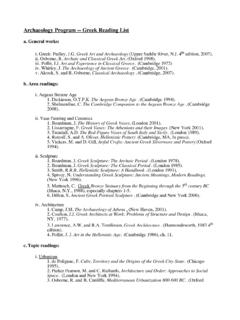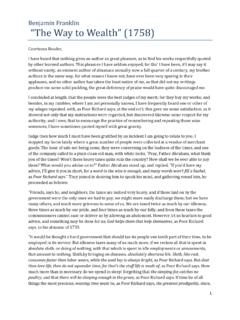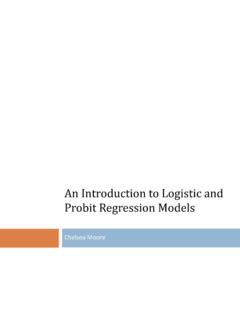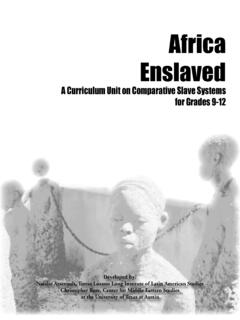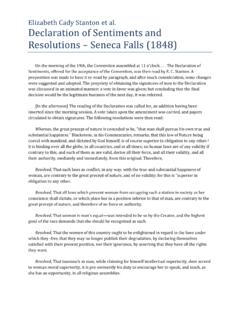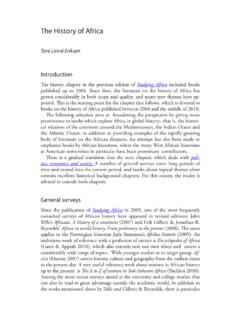Transcription of World War One - UT College of Liberal Arts
1 1 World War OneTable of ContentsActivity One: Can You Stop the War? (Decision Making Activity)Pages: 2 - 8 Activity Two: Over the Top! (Trench Warfare Simulation)Pages: 9 - 14 Activity Three: World War One Poetry Analysis ActivityPages: 15 - 26 Activity Four: Selections from A White Man's War? World War One and the West Indies (Document Analysis Activity)Pages: 27 - 342 Can You Stop the War? World War One Decision Making ActivityPurpose: Students will use collaborative skills tostop World War Correlation(1) history . The student understands traditional historical points of reference in World history . The student is expected to:(F) identify major causes and describe the major effects of the following important turning points in World history from 1914 to the present: the World wars and their impact on political, economic, and social systems(10) history .
2 The student understands the causes and impact of World War I. The student is expected to:(A) identify the importance of imperialism, nationalism, militarism, and the alliance system in causing World War I;(31) Social studies skills. The student uses problem-solving and decision-making skills, working independently and with others, in a variety of settings. The student is expected to:(A) use a problem-solving process to identify a problem, gather information, list and consider options, consider advantages and disadvantages, choose and implement a solution, and evaluate the effectiveness of the solution; and(B) use a decision-making process to identify a situation that requires a decision, gather information, identify options, predict consequences, and take action to implement a Included:1A - Allied Powers scenario1B - Central Powers scenario1C - Individual decision sheet1D - Group decision sheetInstructions1.
3 Put students into pairs. 2. Give each pair a scenario - either the Central Powers (document 1B) or the Allied Powers (document 1A) - and an individual decision sheet (document 1C).a. Students need to read the scenario. They will then come up with three possible solutions to the problem. b. They must come up with possible positive & negative consequences for each possible Once students have done this, they need to pick their strongest solution & justify their Once the majority of class has completed their decision charts, please organize each side into large circles. a. First, each pair needs to present their strongest solution & the reason they picked After all pairs have presented, the group must come to a consensus on a group solution. As they are debating the group should be filling out the group decision sheet (document 1D).
4 4. After each group has come to a consensus, have the group elect a representative. This representative will present the possible solution to the other group using document PowersCentralPowers3a. The other group does NOT get to talk to the representative. The representative states their position and then After the representative has left, THEN the group has 5 minutes to debate if they will take the opposite groups offer or reject it. 5. Have the students pick another representative. They will present the group s final choice to the class. 6. Teacher will then debrief on why they made their choices, and then how close they were to the actual War One Decision TreeAllied PowersScenario: Your country is in an alliance with Britain, France and Russia. Russia is an ally of Serbia. Your alliance is at odds with the Central Powers (Germany, Austria-Hungary, and the Ottoman Empire).
5 You are concerned about the Central Powers for several reasons. Germany has built a huge army and navy and is becoming very aggressive. Competition in Africa and Asia for resources has raised tensions and sporadic fighting is breaking out. The rise of aggressive nationalism is fueling border conflicts between France (your ally) and Germany (also between Austria-Hungary and Serbia). Tensions in Europe are rising, and countries are stockpiling weapons and preparing for flash!The Archduke of Austria-Hungary has been assassinated by a Serbian nationalist! Austria-Hungary is threatening to declare war on Serbia! If you cannot defuse the situation, this conflict will kick start the alliance system, and you will be pulled into a devastating war!What do you do????5 World War One Decision TreeCentral PowersScenario: Your country is in an alliance with Austria-Hungary, Germany, and the Ottoman Empire.
6 Your alliance is at odds with the Allied Powers (Britain, France, and Russia). Serbia is an ally of are concerned about the Allied Powers for several reasons. Britain is still the World s leading power and thus a competitor with Germany for political influence and economic opportunity. Competition in Africa and Asia for resources has raised tensions and sporadic fighting is breaking out. The rise of violent nationalism is fueling border conflicts between Germany (your ally) and France (also between Austria-Hungary and Serbia). Tensions in Europe are rising, and countries are stockpiling weapons and preparing for war. News flash!The Archduke of Austria-Hungary has been assassinated by a Serbian nationalist! Austria-Hungary is threatening to declare war on Serbia! If you cannot defuse the situation, this conflict will kick start the alliance system, and you will be pulled into a devastating war!
7 What do you do????6 World War I Decision Making Activity OptionsPossible Positive ConsequencesPossible Negative ConsequencesWhat is your final decision? Why did you pick this? 7 Decision Tree- Group DecisionGroup:_____Group members:1. What will we do to solve this problem? What can we offer the other group?2. What positive consequences will happen if the other group accepts our offer? What negative consequences will happen if the other group does not accept our offer? , this is a negotiation you want to get what you want with the LEAST possible cost to you!Keep going!84. What to say to the other group:A. We are offering to You should .. (2 ideas of what the other group should do and why!)5. What the other group is offering us:6. Do we accept the other group s offer? YES or NOGive two reasons supporting your decision below9 Over the Top!
8 World War One - Trench Warfare SimulationPurpose: have the students discover the conditions in the trenchesTEKs Correlation(1) history . The student understands traditional historical points of reference in World history . The student is expected to:(F) identify major causes and describe the major effects of the following important turning points in World history from 1914 to the present: the World wars and their impact on political, economic, and social systems; communist revolutions and their impact on the Cold War;(1) history . The student understands traditional historical points of reference in World history . The student is expected to:(F) identify major causes and describe the major effects of the following important turning points in World history from 1914 to the present: the World wars and their impact on political, economic, and social systems; (10) history .
9 The student understands the causes and impact of World War I. The student is expected to:(B) identify major characteristics of World War I, including total war, trench warfare, modern military technology, and high casualty rates;Materials Needed: Black butcher paper Tape Wire garland (with stars) Glowstick bracelets Christmas lights Notebook paper & pencils Ammunition papers (document 3B) Signs Central Powers & Allied Powers (document 3A)Room Setup*see diagram on the next page!1. Divide room into two sides, labeling each Central Powers or Allied Powers. 2. Move the desks to make a trench in the middle of the room. Use the black butcher paper to cover the trench desks, the windows, and any other light sources in the room. The room should be as dark as possible when the simulation String the Christmas lights on the far sides of the trench for ambient Use the wire garland at the top of the trench to simulate barbed wire.
10 5. If you want sound during your simulation, there are places to find war soundsa. If you have an android device, you can use this app to play war sounds: If you have an Ipad / Iphone, you can use this app to play war sounds: +-war-sounds-free-soundtrack/id447425109 ?mt=8c. If you have a PC, you can use this site to play war sounds: Instructions:1. When the students arrive, assign them to a side of the conflict. Have all students put their bags out of the way (possibly against a wall or on a table).2. Instruct students to take out a pencil / pen and a piece of paper that is all they will need. 3. Pass out two ammunition cards to each student (document 3B).a. Have the students tear the ammunition card in half (document 3B)into two parts. Each student needs 2 safe cards & two blank cards. b. Students need to crumple the safe cards into small balls.

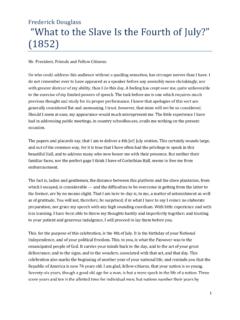
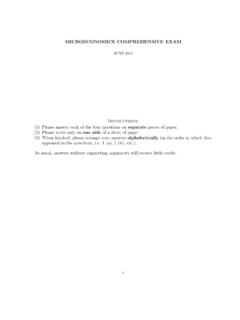
![Letter from Birmingham Jail (1963) [Abridged]](/cache/preview/c/b/b/9/f/7/9/e/thumb-cbb9f79e05a91eb427f1e4c6fe6e1ac5.jpg)
